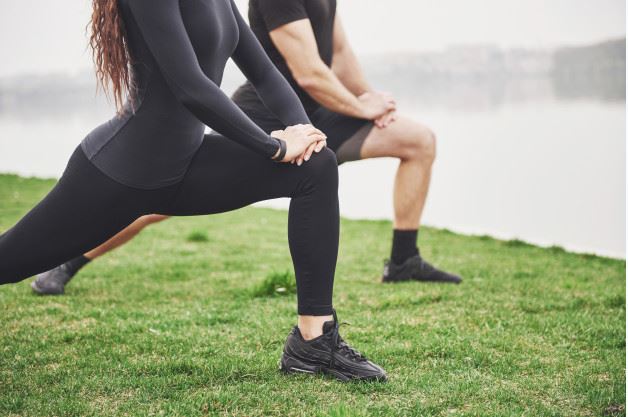Women generally have a higher body fat percentage than men. While most of the total body fat in women is localized in the hip-leg area, in men it is localized around the abdomen, which we call the abdominal area. Could this difference in fat storage indicate that fat burning can differ between sexes?
While some studies do not report a difference between men and women, most of the studies conclude that there are marked differences in fatty acid mobilization, oxidation, and storage between sexes. Does this difference give women an advantage during exercise?
Most studies have shown that during submaximal exercise (60% of VO2max) women have a lower respiratory exchange ratio, in other words, higher fat oxidation (1,2,3). In the study by Jeukendrup et al., with 300 participants (approximately 50% female/male ratio), they determined the amount of fat oxidation at different exercise intensities (4), the results showed that women used more fat than men in long-term endurance exercises.
Let’s look at the factors that cause this difference according to the results of the studies;
- First of all, women are thought to have more lipid oxidation during exercise due to the higher total body fat percentage. This is attributed to the difference in free fatty acid availability between the sexes. Studies have shown that women have a higher glycerol ratio during submaximal cycling exercise compared to men (1). In addition, it has been shown that women have lower glucose uptake into the skeletal muscle during exercise and lower muscle glycogen use for energy production (1,5).
- Secondly; Differences in hormone activities between genders are thought to cause differences in free fatty acid transport and oxidation capacity. Circulating concentrations of epinephrine and norepinephrine (i.e. sympathetic activity) during exercise are higher in men than in women. This may result in increased glycogen use in men, as epinephrine stimulates muscle glycogenolysis. In addition, studies have found that women have a higher rate of lipolysis due to sympathetic activity in the abdominal region (6,7). This explains why there is more fat in the abdominal area in men than in women.
- Another factor may be the higher carbohydrate oxidation capacity of men. Studies have found that men have a higher rate of phosphofructokinase/3-hydroxylCoA dehydrogenase (glycolytic oxidation/fat burning potential) (8).
- Another reason is; may be a difference in our genetics, a more fundamental factor. One study found that mRNA expression was higher in the fatty acid transport protein attached to the cell membrane of women (9). This is a factor that will facilitate the transport of fatty acid in women.
Although these results are correct, it is useful to consider variables such as age, body composition, lean body mass, and training status. If we examine this difference between the genders in terms of sports performance; It can be said that the fact that women save on carbohydrates reduces the risk of hitting the wall in long-term races. However, although there are differences between the sexes, it is not possible to give a nutritional recommendation in practice. A study by Jeukendrup et al. shows that we are talking about a difference of 0.66 mg per kilogram of lean body mass between the sexes. In this case, women with 55 kg and 12% fat will burn 42 mg more fat compared to a man and a woman. In other words, we can say that women will burn 2.5 grams more fat per hour or spend 22 kcal more energy. Although this amount is different in theory, does it make a difference in practice?
References
- Carter SL, Rennie C, Tarnopolsky MA. Substrate utilization during endurance exercise in men and women after endurance training. Am J Physiol Endocrinol Metab 2001; 280:E898±907.
- Toth MJ, Gardner AW, Arciero PJ, et al. Gender differences in fat oxidation and sympathetic nervous system activity at rest and during submaximal exercise in older individuals. Clin Sci (Colch) 1998; 95:59±66.
- Horton TJ, Pagliassotti MJ, Hobbs K, Hill JO. Fuel metabolism in men and women during and after long-duration exercise. J Appl Physiol 1998; 85:1823±1832.
- Venables MC, Achten J, Jeukendrup AE. Determinants of fat oxidation during exercise in healthy men and women: a cross-sectional study. J Appl Physiol (1985). 2005 Jan;98(1):160-7.
- Tarnopolsky MA. Gender differences in lipid metabolism during exercise and rest. In: Gender differences in metabolism. Practical and nutritional implications. Tarnopolsky MA (editor). Florida: CRC Press LLC, 1999. pp.179±199.
- Arner P, Kriegholm E, Engfeldt P, Bolinder J. Adrenergic regulation of lipolysis in situ at rest and during exercise. J Clin Invest 1990; 85:893±898.
- Hellstrom L, Blaak E, Hagstrom-Toft E. Gender differences in adrenergic regulation of lipid mobilization during exercise. Int J Sports Med 1996; 17:439±447.
- Green HJ, Fraser IG, Ranney DA. Male and female differences in enzyme activities of energy metabolism in vastus lateralis muscle. J Neurol Sci 1984; 65:323±331.
- Binnert C, Koistinen HA, Martin G, et al. Fatty acid transport protein-1 mRNA expression in skeletal muscle and in adipose tissue in humans. Am J Physiol Endocrinol Metab 2000; 279:E1072±E1079.
